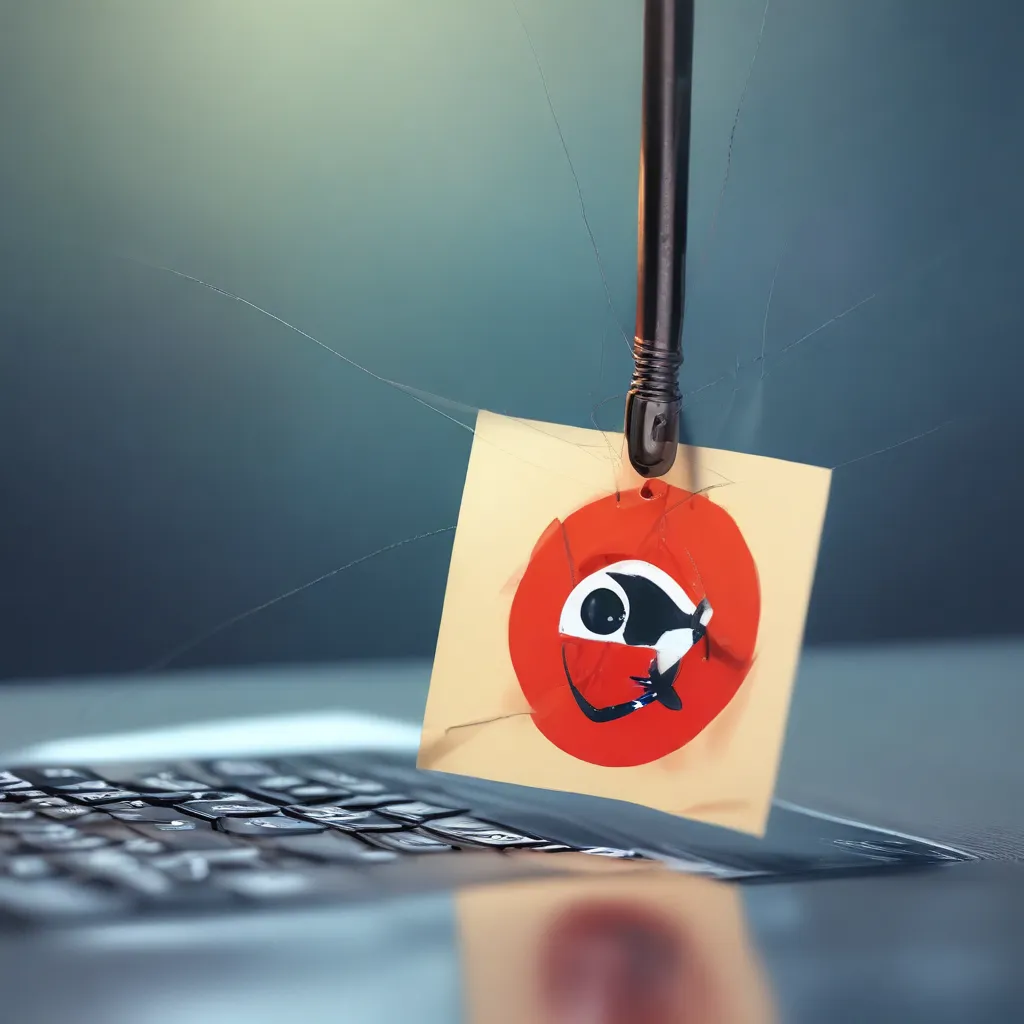
Outsmarting the Sneaky Scammers: A Crash Course in Phishing Detection
Picture this: You’re casually checking your email, when suddenly, an urgent message pops up, claiming to be from your bank. It looks legit – the logo is there, the formatting is spot-on, and the message is even personalized with your name. But before you click that link to “update your account information,” let me let you in on a little secret: it’s probably a phishing scam.
Phishing attacks are the bane of the digital age. Scammers have become increasingly savvy, using sophisticated techniques to trick unsuspecting victims into handing over sensitive information. But fear not, my friends! I’m here to share my hard-earned wisdom on how to spot these sneaky scams, and keep your data, your devices, and your sanity intact.
The Anatomy of a Phishing Email
Let’s dive in, shall we? Phishing emails typically follow a familiar pattern. They often start with a sense of urgency, like a warning about a suspicious login attempt or a “urgent” request to update your account details. The email may even appear to be from a legitimate company, such as your bank, a popular online retailer, or a government agency.
But here’s the catch: these emails are carefully crafted to look authentic, down to the last pixel. Scammers will often use real logos, professional-looking templates, and even spoof the email address to make it seem like it’s coming from a trusted source.
The goal? To make you let your guard down and click on that enticing link or attachment. And let me tell you, once you do that, it’s like opening Pandora’s box – those scammers can gain access to your personal information, your financial accounts, and even your entire digital life.
Spotting the Red Flags
So, how can you avoid falling victim to these phishing schemes? It all comes down to being a savvy email detective. Here are some telltale signs that an email might be a phishing attempt:
-
Suspicious Sender Address: Take a close look at the email address – does it really match the company it claims to be from? Scammers often use similar-looking domains to trick you, like “mybank.com” instead of “my-bank.com.”
-
Lack of Personalization: Legitimate companies will usually address you by name or include other personalized details. If the email feels generic, it’s a red flag.
-
Urgent Calls to Action: Phishing emails often try to create a sense of panic, urging you to act quickly before something terrible happens. Don’t fall for the pressure tactics.
-
Vague or Suspicious Links: Hover over any links in the email before clicking. If the URL doesn’t match the company’s website, or it looks sketchy, don’t take the risk.
-
Requests for Sensitive Information: Reputable organizations will never ask you to share your passwords, social security numbers, or other private data over email.
Remember, even if an email looks convincing, it’s always better to err on the side of caution. If you’re ever unsure, reach out to the company directly using a phone number or website you know is legitimate.
Protecting Yourself and Your Data
Now that you know how to spot a phishing email, it’s time to take action. Here are some proactive steps you can take to safeguard your digital life:
-
Install Robust Security Software: Keep your computer and mobile devices protected with the latest antivirus and anti-malware tools. Set them to update automatically for maximum protection.
-
Embrace Multi-Factor Authentication: Enable two-factor or multi-factor authentication on all your important accounts. This extra layer of security makes it much harder for scammers to access your information.
-
Back Up Your Data: Regularly back up your files, whether to an external hard drive or a secure cloud storage service. That way, if the worst does happen, you can rest easy knowing your data is safe.
-
Stay Vigilant: Be on the lookout for any suspicious activity, and don’t hesitate to report phishing attempts to the proper authorities. The more we collectively fight back against these scams, the safer we all become.
Remember, knowledge is power when it comes to combating phishing scams. By staying informed and vigilant, you can outsmart even the sneakiest of scammers. So, the next time you receive an email that just doesn’t feel right, trust your instincts and take the necessary steps to protect yourself.
After all, your digital security is too important to leave in the hands of the criminals. Let’s take back control and make the internet a safer place for everyone!












